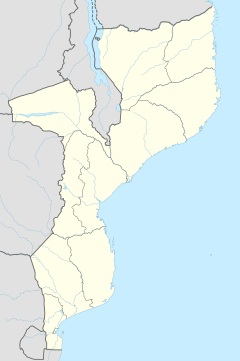Ndala | |
|---|---|
| Coordinates: 12°51′6″S39°30′21″E / 12.85167°S 39.50583°E | |
| Country | |
| Province | Cabo Delgado Province |
| District | Ancuabe District |
| Time zone | UTC+2 (Central Africa Time) |
Ndala is a village in Ancuabe District in Cabo Delgado in northeastern Mozambique. [1]
Ndala is a common name in central and southern parts of Africa. Ndala has two main meanings:
1. Ndala is an honorific title given to a royal family or a royal generation ( specially in some tribes of Republic Democratic of Congo). It can also be translated as Prince or Princess.
2. Ndala also means palm branches. In Africa, the palm branch represents a symbol of triumph and victory, also a symbol of joy and celebration. The palm branch is also often used on a house of a bereaved family as a sign of comfort and a reminder that there is hope in resurrection. Ndala is basically a name to inspire joy and consolation.
